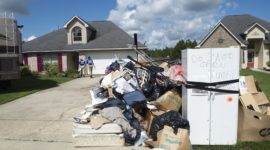27 Mar
2020
Connect to the Keepers of Your Story
Don’t let COVID-19 stop you from connecting to the keepers of your stories.
As many now live under mandatory ‘stay at home’ orders, questions of connection are arising in many parts of society. This season points to the pressing need to connect with some of our most vulnerable members– the keepers of our stories – our elders.
I have said often, time is running out, we cannot afford to wait long to do those interviews and learn the family oral histories and stories. One day our family elders will be gone; and if we have not collected their stories, we may lose a valuable part of our past. Now that we are living in quarantine, I feel this need much more keenly.
Connection spaces have changed for our elders
At a recent symposium (weeks before we knew anything about COVID-19), I met a researcher, Maria Cristina Leite, whose work has focused on family history and community cohesion. We talked a lot about the function of third places. If you’re not familiar with that term, let me offer a brief explanation.
Third places is a term coined by sociologist Ray Oldenburg and refers to places where people spend time between home (‘first’ place) and work (‘second’ place). They are locations where we exchange ideas, have a good time, and build relationships. (You can learn more at www.brookings.edu.)
Maria and I discussed much about the roles of third places. My dad’s brother owned a drug store on the southside of St. Petersburg Florida for many years. The store was the meeting place for what many affectionately called “The Clairol Club.” A group of older men, who would all be white haired except for their love of Clairol hair coloring kits. These were the unofficial “mayors” of town. If you wanted to know what was happening in the community, this is where you went to find out. Hanging out with these city elders was a great way to learn history.
Real third places like the store front, and fictitious ones (like the bar represented in the TV show Cheers) now belong to a different time. And with the restrictions of the current pandemic their place in society is even more threatened. Engagements via smartphone have replaced physical gathering spaces. For many a physical third space no longer exists. This is a bother and an inconvenience for me and those of my children’s generation. But to the older folks among us (let’s say those 70 and over) this can be a real challenge.
Physical distancing and not social distancing
We are hearing a lot of folks talk about the need for “social distancing” as we combat the spread of COVID-19. Again I borrow from conversations with Maria Cristina Leite, who has started using the terminology ‘physical distancing’ as a replacement for ‘social distancing.’ Wording like ‘physical distancing’ allows us to achieve the same containment benefits without losing sight of the big-picture need to remain connected; to be social.
We do not want social distancing. Physical distancing does not infer social isolation, not even a potentially deadly virus should not force us to be alone. Physical distancing should not force us to forgo the important tasks of discovery, preserving, and sharing of our family narratives. Now, more than ever, we need to find smart ways to be connected.
How do we connect?
We should consider how to connect safely during this pandemic with our elders. We must also help our elders make safe connections. Parents in the community are looking for ways to keep their children engaged while home from school, like writing letters to seniors. However, assisted living facilities say digital is the safer way to go.
“We’re asking for digital messages, pictures, videos, from locals to our residents because we want to limit the exposure to our residents of outside contaminants and we’ve learned that the virus can live on surfaces for an extended amount of time,” says Juniper Village at Brookline Senior Living Connections Direction Jill McKenrick. “We don’t want to risk that exposure to our residents here.”
McKenrick says, “People in the community can keep it positive by sharing those encouraging messages both digitally and electronically to keep spirits high and ensure people that we are together, even though we can’t be together right now, and support each other in that way.”
Staying in touch and making contact from a distance
Now that third places are at least temporarily outlawed, what do we do for those who depended on such spaces for connections? Bobbi Matchar, director of the Duke Dementia Family Support Program, has a few suggestions for decreasing social isolation among seniors while maintaining physical distance:
- Phone calls, texts, email, FaceTime, Skype, Facebook
- GrandPad (tablet designed for seniors; a good option if people can afford it)
- Reading to grandchildren over FaceTime
- Digital picture frames
- Watching live-streaming worship services and submitting prayer requests online
- Attending online support groups for specific conditions, such as the dementia caregiver groups offered on Zoom by the Duke Dementia Family Support Program
- Short neighborhood walks, waving to neighbors
- Online book groups
- Virtual tours, museums, concerts and plays
But for this to work our elders will need to learn the ‘new’ technology. Many of our elders are accustomed to telephones as a tool for making calls. They are not accustomed to portable mini-computers. So while apps like FaceTime, Zoom, Skype, Facebook, Twitter, Snapchat and others are great for communications; they may present challenges for those unfamiliar.
All sorts of online options exist to talk with our older family members. We must communicate with them that you don’t have to be tech-savvy to use these tools. Doing the basics is easy, and for most, fun. Setting up an online account can be daunting, so you might want to consider having the grandchild, niece or nephew, configure the device and offer the elder a few quick tutorials.
Looking for something to do with the long days of physical distancing, quarantining, and isolation? Teach a family elder how to use a digital device and then connect with them. Let them tell you ‘new’ stories of the past.




